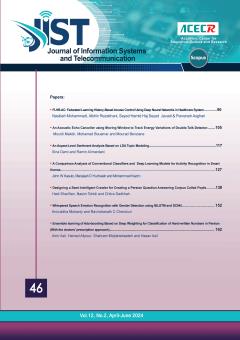Hyperspectral image (HSI) classification is an essential means of the analysis of remotely sensed images. Remote sensing of natural resources, astronomy, medicine, agriculture, food health, and many other applications are examples of possible applications of this techni
More
Hyperspectral image (HSI) classification is an essential means of the analysis of remotely sensed images. Remote sensing of natural resources, astronomy, medicine, agriculture, food health, and many other applications are examples of possible applications of this technique. Since hyperspectral images contain redundant measurements, it is crucial to identify a subset of efficient features for modeling the classes. Kernel-based methods are widely used in this field. In this paper, we introduce a new kernel-based method that defines Hyperplane more optimally than previous methods. The presence of noise data in many kernel-based HSI classification methods causes changes in boundary samples and, as a result, incorrect class hyperplane training. We propose the optimized kernel non-parametric weighted feature extraction for hyperspectral image classification. KNWFE is a kernel-based feature extraction method, which has promising results in classifying remotely-sensed image data. However, it does not take the closeness or distance of the data to the target classes. Solving the problem, we propose optimized KNWFE, which results in better classification performance. Our extensive experiments show that the proposed method improves the accuracy of HSI classification and is superior to the state-of-the-art HIS classifiers.
Manuscript profile


